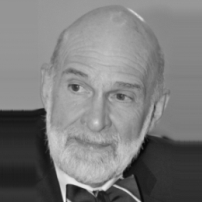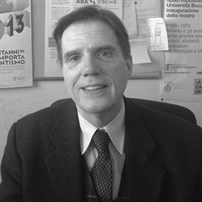|
Temporal Control: A Spencean Model, Its Strengths and Limitations |
| Wednesday, November 15, 2017 |
| 8:00 AM–8:50 AM |
| Scene AB, Niveau 0 |
| Area: EAB; Domain: Basic Research |
| CE Instructor: Armando Machado, Ph.D. |
| Chair: Peter R. Killeen (Arizona State University) |
| ARMANDO MACHADO (University of Minho) |
 Dr. Armando Machado obtained his Ph.D. in 1993 from Duke University. His doctoral research examined the conditions in which pigeons generate highly variable, random-like behavior, and received a Behavior Analysis Dissertation Award from Division 25. Dr. Machado currently teaches and conducts research at the University of Minho in the north of Portugal, where he continues to study a variety of issues related to behavior and learning (e.g., time and number discrimination, choice). His studies contrast the results of laboratory experiments with the predictions of simple mathematical models of behavior and learning. In addition to the psychology of learning, Dr. Machado's interests include mathematics, evolutionary biology, philosophy, and the history of psychology. His work has been funded by the National Institutes of Mental Health (USA) and the Portuguese Foundation for Science and Technology and published in Animal Cognition, Behavioural Processes, Journal of the Experimental Analysis of Behavior, and others. He has served as the program chair and president for the Society for the Quantitative Analysis of Behavior, and as president of the Portuguese Association of Experimental Psychology. Dr. Armando Machado obtained his Ph.D. in 1993 from Duke University. His doctoral research examined the conditions in which pigeons generate highly variable, random-like behavior, and received a Behavior Analysis Dissertation Award from Division 25. Dr. Machado currently teaches and conducts research at the University of Minho in the north of Portugal, where he continues to study a variety of issues related to behavior and learning (e.g., time and number discrimination, choice). His studies contrast the results of laboratory experiments with the predictions of simple mathematical models of behavior and learning. In addition to the psychology of learning, Dr. Machado's interests include mathematics, evolutionary biology, philosophy, and the history of psychology. His work has been funded by the National Institutes of Mental Health (USA) and the Portuguese Foundation for Science and Technology and published in Animal Cognition, Behavioural Processes, Journal of the Experimental Analysis of Behavior, and others. He has served as the program chair and president for the Society for the Quantitative Analysis of Behavior, and as president of the Portuguese Association of Experimental Psychology. |
| Abstract: Dr. Machado willpresent a Spencean, synthetic approach to interval timing in animals, an approach grounded on the hypothesis that temporal generalization gradients may combine to produce complex forms of behavior. The hypothesis is instantiated by the Learning-to-Time (LeT) model. First,he will review how LeT accounts for the generalization gradients obtained in prototypical timing procedures. Then,he will show how, by combining these gradients, LeT accounts for more complex data and some surprising findings. Finally,he will discuss some current obstacles to our understanding of timing, including the boundary conditions of generalization gradients, the possibility of inhibitory temporal gradients, and how temporal memories are created, accessed, and retrieved. |
| Target Audience: Licensed behavior analysts, psychologists, graduate students. |
| Learning Objectives: At the conclusion of the presentation, participants will be able to: (1) describe the main behavioral properties of temporal generalization gradients; (2) describe how, using a Spencean approach, these gradients may be combined to explain more complex behavior; (3) explain how some laboratory findings related to temporal performance challenge our theoretical understanding of timing. |
|
| |
| |
|
Food Intake Behavior and Eating Disorders: Inputs of Animal Models |
| Wednesday, November 15, 2017 |
| 9:00 AM–9:50 AM |
| Scene AB, Niveau 0 |
| Area: PRA; Domain: Applied Research |
| Instruction Level: Basic |
| CE Instructor: Vinca Riviere, Ph.D. |
| Chair: Vinca Riviere (University of Lille ) |
| ODILE VILTART (Universite des Sciences et Technologies de Lille 1) |
 Dr. Odile Viltart is currently an associate professor at the University of Lille 1. She has served as a referee for Pediatric Research, Journal of Applied Physiology, Hormones and Behavior, Psychoneuroendocrinology, Europoean Child and Adolescent Psychology, and several other journals. She has published over 100 journal articles and book chapters. Dr. Odile Viltart is currently an associate professor at the University of Lille 1. She has served as a referee for Pediatric Research, Journal of Applied Physiology, Hormones and Behavior, Psychoneuroendocrinology, Europoean Child and Adolescent Psychology, and several other journals. She has published over 100 journal articles and book chapters. |
| Abstract: Feeding is a behavior essential for survival of every living organism. It guarantees adequate and varied supply of nutriments to maintain appropriate energy levels for basal metabolism, physical activity, growth, and reproduction. In mammals, the maintenance of a high metabolic rate to preserve constant temperature requires constant availability of a sufficient amount of energy stores. The balance between energy demand and expenditure is finely tuned by a constant dialog between homeostatic and hedonic brain systems, and peripheral signals to regulate feeding behavior and energy homeostasis. Understanding mechanisms that control feeding behavior remain a current and crucial scientific subject for understanding both etiology and potential therapeutic approaches of eating disorders that include some forms of obesity, on one hand, and severe forms of anorexia nervosa (AN) on the other. The purpose of this presentation is to describe some of the current animal models used to better understand the feeding behavior and eating disorders with a special focus on AN. |
| Target Audience: Board certified behavior analysts, licensed psychologists, graduate students. |
| Learning Objectives: At the conclusion of the presentation, participants will be able to: (1) identify the complexity of food intake behavior, from homeostasis to motivation; (2) identify how animal models can be used to better apprehend behavioral dysfunction in eating disorders; (3) discuss the validity of animal models to understand human diseases. |
|
| |
| |
|
Fifty Years of Research in Complex Human Reinforcers |
| Wednesday, November 15, 2017 |
| 10:30 AM–11:20 AM |
| Scene AB, Niveau 0 |
| Area: PCH; Domain: Theory |
| Instruction Level: Basic |
| CE Instructor: R. Douglas Greer, Ph.D. |
| Chair: Martha Costa Hubner (University of São Paulo) |
| R. DOUGLAS GREER (Columbia University Teachers College and Graduate School of Arts and Sciences) |
 Dr. R. Douglas Greer is Professor of Psychology and Education at the Graduate School of Arts and Sciences and Teachers College of Columbia University where he heads the MA and Ph.D. programs in behavior analysis and the education of students with disabilities. He has served on the editorial boards of 10 journals, published over 200 research and theoretical articles in more than 20 journals and is the author of 13 books in behavior analysis. Two of his most recent books are translated into Korean, Spanish, and Italian. Greer has sponsored 216 doctoral dissertations taught over 2,000 teachers and psychologists, originated the CABAS? model of schooling used in the USA, Ireland, Italy, England and founded the Fred S. Keller School (www.cabasschools.org). He has done basic and applied experimental research in schools with students, teachers, parents, and supervisors as well as pediatric patients in medical settings. He and his colleagues have identified verbal behavior and social developmental cusps and protocols to establish them when they are missing in children. He is a recipient of the Fred S. Keller Award for Distinguished Contributions to Education from the American Psychology Association, a Fellow of the Association for Behavior Analysis International, recipient of May 5 as the R. Douglas Day by Westchester County Legislators. He has served as guest professor at universities in China, Spain, Wales, England, Japan, Korea, India, Ireland, Italy, USA, and Nigeria. Dr. R. Douglas Greer is Professor of Psychology and Education at the Graduate School of Arts and Sciences and Teachers College of Columbia University where he heads the MA and Ph.D. programs in behavior analysis and the education of students with disabilities. He has served on the editorial boards of 10 journals, published over 200 research and theoretical articles in more than 20 journals and is the author of 13 books in behavior analysis. Two of his most recent books are translated into Korean, Spanish, and Italian. Greer has sponsored 216 doctoral dissertations taught over 2,000 teachers and psychologists, originated the CABAS? model of schooling used in the USA, Ireland, Italy, England and founded the Fred S. Keller School (www.cabasschools.org). He has done basic and applied experimental research in schools with students, teachers, parents, and supervisors as well as pediatric patients in medical settings. He and his colleagues have identified verbal behavior and social developmental cusps and protocols to establish them when they are missing in children. He is a recipient of the Fred S. Keller Award for Distinguished Contributions to Education from the American Psychology Association, a Fellow of the Association for Behavior Analysis International, recipient of May 5 as the R. Douglas Day by Westchester County Legislators. He has served as guest professor at universities in China, Spain, Wales, England, Japan, Korea, India, Ireland, Italy, USA, and Nigeria. |
| Abstract: After over five decades of research in behavior analysis devoted to behaviors of making and choosing music, learning of behaviors, teaching behavior and a cybernetic teaching system, as well as verbal behavior and its development, I think I have really been studying reinforcers rather than behavior. I shall describe why I think that identifying and establishing reinforcers that humans can learn (or not learn) to contact suggests the sources of multiple responses to single stimuli and single responses to multiple stimuli. Build reinforcers and the reinforcers will continue to add new responses, new motivational conditions, and numerous discriminative stimuli. Learned reinforcers and motivational conditions make complex human behaviors and contextual control possible. |
| Target Audience: Licensed behavior analysts, psychologists, graduate students. |
| Learning Objectives: At the conclusion of the presentation, participants will be able to: (1) describe what is meant by the statement, “build reinforcers and behaviors will follow;" (2) describe how conditioned social reinforcers lead to new verbal behavior developmental cusps; (3) describe what is meant by reinforcers for observing responses should be in place before teaching certain discriminations. |
|
| |
| |
|
From the Clinic to the Lab and Back |
| Wednesday, November 15, 2017 |
| 11:30 AM–12:20 PM |
| Scene AB, Niveau 0 |
| Area: DEV; Domain: Basic Research |
| Instruction Level: Basic |
| CE Instructor: Per Holth, Ph.D. |
| Chair: M. Jackson Marr (Georgia Tech) |
| PER HOLTH (Oslo and Akershus University College of Applied Sciences) |
 Professor Per Holth received his license to practice psychology in 1983, and his Ph.D. in 2000, with a dissertation on the generality of stimulus equivalence. His clinical work has been in services for people with autism and developmental disabilities, in psychiatric units, and in the military services. His research activities span basic research, on stimulus equivalence and joint attention, as well as applied work and management of large research projects. Per Holth has taught classes in behavior analysis and learning principles at the University of Oslo and Oslo and Akershus University College (OAUC) since 1982, and joined the faculty of OAUC and the Program for learning in complex systems, as an associate professor in 2004 and as full professor in 2006. He teaches classes in all behavior-analytic education programs at OAUC. He has written for peer-reviewed publications on basic research, applied work, and philosophy of science; served on several editorial boards; and he has a member of the editorial troika of the European Journal of Behavior Analysis for 15 years. He has been a program co-coordinator of the TPC area of ABAI, is currently a program co-coordinator for the development area, and he is on the board of directors of the B. F. Skinner Foundation. His current research interests have drifted in the direction of basic experimental work with animals and humans. Professor Per Holth received his license to practice psychology in 1983, and his Ph.D. in 2000, with a dissertation on the generality of stimulus equivalence. His clinical work has been in services for people with autism and developmental disabilities, in psychiatric units, and in the military services. His research activities span basic research, on stimulus equivalence and joint attention, as well as applied work and management of large research projects. Per Holth has taught classes in behavior analysis and learning principles at the University of Oslo and Oslo and Akershus University College (OAUC) since 1982, and joined the faculty of OAUC and the Program for learning in complex systems, as an associate professor in 2004 and as full professor in 2006. He teaches classes in all behavior-analytic education programs at OAUC. He has written for peer-reviewed publications on basic research, applied work, and philosophy of science; served on several editorial boards; and he has a member of the editorial troika of the European Journal of Behavior Analysis for 15 years. He has been a program co-coordinator of the TPC area of ABAI, is currently a program co-coordinator for the development area, and he is on the board of directors of the B. F. Skinner Foundation. His current research interests have drifted in the direction of basic experimental work with animals and humans. |
| Abstract: An important modern challenge concerns how to make sure that we use the behavioral science that we already have. However, it is also a challenge to make sure we have the basic science that we need. For example, when working with children with autism, both of these challenges seem constantly relevant. Although basic behavioral science may in some areas be far more advanced than what we have thus far been able to implement in the general services for children with autism, there are also some striking holes in our basic knowledge. The present paper will address some of these shortcomings. For example, when children with autism deviate from other children in the range of stimuli that reinforce their behavior, a highly relevant question concerns how, most effectively to establish new stimuli as conditioned reinforcers. We do not really know. Further, if we simply establish standard reinforcing stimuli, such as other peoples nods and smiles, as conditioned reinforcers, can the children learn standard things from the natural environment, like typically developing children, without much contrived “teaching?” Another important issue has to do with the fact that shaping requires behavioral variability, and we need to know more about how such variability is most effectively established? |
| Target Audience: Licensed behavior analysts, psychologists, graduate students. |
| Learning Objectives: At the conclusion of the presentation, participants will be able to: (1) Describe examples where more work is needed to make sure we use the behavioral science we already have; (2) Describe examples where we need more basic research in order to supply practical solutions to socially important problems; (3) Describe alternative procedures that may produce conditioned reinforcers. |
|
| |
| |
|
Psychopathology as Adaptation to Aversive Control: Experimental Analyses |
| Wednesday, November 15, 2017 |
| 2:00 PM–2:50 PM |
| Scene AB, Niveau 0 |
| Area: CBM; Domain: Basic Research |
| CE Instructor: Robert C. Mellon, Ph.D. |
| Chair: Michael J. Dougher (University of New Mexico) |
| ROBERT C. MELLON (Panteion University of Social and Political Sciences) |
 Robert C. Mellon, Ph.D, BCBA, is professor of the Department of Psychology at the Panteion University of Social and Political Sciences in Athens, Greece, where he established a seven-semester undergraduate course of studies in behavioral philosophy and science, and directs the Laboratory of Experimental and Applied Behavior Analysis. He received his doctorate from the University of North Carolina at Greensboro in 1987, where he trained in both the clinical psychology and experimental analysis of behavior programs. He completed the Clinical Psychology Internship Program at New York University-Bellevue Hospital Center. Mellon was a postdoctoral research fellow at the Center for Developmental Psychobiology at the State University of New York at Binghamton, and an NIMH National Research Service Award fellow at the New York State Psychiatric Institute and Columbia University. For four years he travelled Asia, the Middle East and Europe teaching in the Overseas Programs of the University of Maryland. Since 1995 he has lived and worked in Greece, initially at the Hellenic Republic University of Crete. Mellon�s empirical and theoretical work, principally in behavioral variability, resistance to change and aversive control, and the implications of these processes in understanding the provenance and treatment of problematic patterns of behavior, has been published in both behavior-analytic and mainstream psychology journals. He is also author of numerous behavior-analytic texts in the Hellenic language, and has collaborated on translations of canonical works of B.F. Skinner, including Walden Two and About Behaviorism. Mellon currently serves as past president on the Board of Directors of the European Association for Behaviour Analysis, and is founding president of the Hellenic Community for Behavior Analysis. He is an associate editor of the European Journal of Behavior Analysis. Robert C. Mellon, Ph.D, BCBA, is professor of the Department of Psychology at the Panteion University of Social and Political Sciences in Athens, Greece, where he established a seven-semester undergraduate course of studies in behavioral philosophy and science, and directs the Laboratory of Experimental and Applied Behavior Analysis. He received his doctorate from the University of North Carolina at Greensboro in 1987, where he trained in both the clinical psychology and experimental analysis of behavior programs. He completed the Clinical Psychology Internship Program at New York University-Bellevue Hospital Center. Mellon was a postdoctoral research fellow at the Center for Developmental Psychobiology at the State University of New York at Binghamton, and an NIMH National Research Service Award fellow at the New York State Psychiatric Institute and Columbia University. For four years he travelled Asia, the Middle East and Europe teaching in the Overseas Programs of the University of Maryland. Since 1995 he has lived and worked in Greece, initially at the Hellenic Republic University of Crete. Mellon�s empirical and theoretical work, principally in behavioral variability, resistance to change and aversive control, and the implications of these processes in understanding the provenance and treatment of problematic patterns of behavior, has been published in both behavior-analytic and mainstream psychology journals. He is also author of numerous behavior-analytic texts in the Hellenic language, and has collaborated on translations of canonical works of B.F. Skinner, including Walden Two and About Behaviorism. Mellon currently serves as past president on the Board of Directors of the European Association for Behaviour Analysis, and is founding president of the Hellenic Community for Behavior Analysis. He is an associate editor of the European Journal of Behavior Analysis. |
| Abstract: Pernicious patterns of behavior termed thought, anxiety, mood and personality "disorders" have long been recognized to be related to social punishment, but the relationship remains poorly specified, limiting the effectiveness of preventative and therapeutic interventions. This presentation reviews findings of a series of experiments supporting a view that seemingly maladaptive patterns of behavior such as stereotypic repetition, self-denigration, and idiosyncratic perception serve to terminate stimuli produced in the inchoate emission of socially-punished response forms, a process in which aspects of effective avoidance are reinforced adventitiously. |
| Target Audience: Licensed behavior analysts, psychologists, graduate students. |
| Learning Objectives: At the conclusion of the presentation, participants will be able to: (1) describe the mechanism of differential and adventitious punishment and reinforcement in establishing the negative and positive reinforcing potency of stimuli automatically produced in the subsequent emission of punished and non-punished response forms, including stimuli issuing from privately-observable acts such as thinking or fantasizing; (2) describe how timely self-exposure to such warning signals for punishment can reduce the probability of emission of punished response forms by evoking non-punished acts; and (3) apply this analysis in interpreting the provenance of “dysfunctional” thought and perceptual processes such as obsessive, catastrophic and paranoid ideation, distorted body- or self-image, as well as in the determination of more fruitful adjustments to ubiquitous social punishment. |
|
| |
| |
|
Real Determinants of Human Operant Behavior |
| Wednesday, November 15, 2017 |
| 3:00 PM–3:50 PM |
| Scene AB, Niveau 0 |
| Area: VBC; Domain: Basic Research |
| Instruction Level: Basic |
| CE Instructor: Koichi Ono, Ph.D. |
| Chair: Ingunn Sandaker (Oslo and Akershus University College of Applied Sciences) |
| KOICHI ONO (Komazawa University) |
 Dr. Koichi Ono is professor of psychology at Komazawa University in Tokyo, where he has conducted research and taught behavior analysis for 33 years. His scholarly publications, authored in Japanese and English, have appeared in journals from four different continents. Professor Ono was among the first to demonstrate the effects of a superstitious behavior in humans (Journal of the Experimental Analysis of Behavior, 1987). He subsequently developed a conceptual analysis of superstitions as false rules. Three other major themes in Dr. Ono's research have been (1) the effects of the history of contingency-controlled behavior on subsequent performance, (2) an analysis of conditions under which free choice is preferred over forced choice, and (3) complex stimulus control. His work has also involved careful cross-species comparisons. For example, in an important paper in Behavioural Processes, Dr. Ono and colleagues used an ingeniously simple matching-to-sample task to reveal different controlling relations in humans and pigeons. Dr. Ono has provided significant leadership and service to the large and active Japanese Association for Behavior Analysis (J-ABA). He was editor of the Japanese Journal of Behavior Analysis (1994-1997), and for 6 years served as president of J-ABA (1997-2003). As a visiting research fellow in Wales and the United States, Dr. Ono has also brought knowledge from Japanese behavior analysis to the international community. Dr. Koichi Ono is professor of psychology at Komazawa University in Tokyo, where he has conducted research and taught behavior analysis for 33 years. His scholarly publications, authored in Japanese and English, have appeared in journals from four different continents. Professor Ono was among the first to demonstrate the effects of a superstitious behavior in humans (Journal of the Experimental Analysis of Behavior, 1987). He subsequently developed a conceptual analysis of superstitions as false rules. Three other major themes in Dr. Ono's research have been (1) the effects of the history of contingency-controlled behavior on subsequent performance, (2) an analysis of conditions under which free choice is preferred over forced choice, and (3) complex stimulus control. His work has also involved careful cross-species comparisons. For example, in an important paper in Behavioural Processes, Dr. Ono and colleagues used an ingeniously simple matching-to-sample task to reveal different controlling relations in humans and pigeons. Dr. Ono has provided significant leadership and service to the large and active Japanese Association for Behavior Analysis (J-ABA). He was editor of the Japanese Journal of Behavior Analysis (1994-1997), and for 6 years served as president of J-ABA (1997-2003). As a visiting research fellow in Wales and the United States, Dr. Ono has also brought knowledge from Japanese behavior analysis to the international community. |
| Abstract: Principles of behavior ought to be shared by human and non-human organisms. However, many studies have shown that in similar circumstances human behavior often differs from non-human behavior. This discourse explores some variables that uniquely operate on human behavior. The most critical feature of human operant behavior is that verbal behavior and nonverbal behavior are intermingled in time. Both verbal and nonverbal responses may enter into common three-term contingencies of reinforcement and punishment. For example, verbal stimuli can evoke emotional changes and can work effectively as an establishing operations. For example, aversive verbal messages spoken or written by others may lead people to engage in avoidance behavior. Verbal events can also function as discriminative stimuli or reinforcing stimuli, as shown in our daily life. Thus, to clarify the variables controlling human operant behavior, an integrated perspective on human behavior must include an analysis not only of how verbal behavior and nonverbal behavior interact with each other, but also of what happens when verbal and nonverbal contingencies conflict with each other and produce inconsistencies in verbal-nonverbal correspondences. |
| Target Audience: Licensed behavior analysts, psychologists, graduate students. |
| Learning Objectives: At the conclusion of the presentation, participants will be able to: (1) Humans are mostly affected by precedent contingency history; (2) Precedent verbal stimuli are critical determinants of human operant behavior; (3) Reinforcing events for humans is often delayed, improbable, and small. |
|
| |
| |
|
Aesthetics From a Behavioral Science Perspective |
| Wednesday, November 15, 2017 |
| 4:30 PM–5:20 PM |
| Scene AB, Niveau 0 |
| Area: PCH; Domain: Theory |
| CE Instructor: Francis Mechner, Ph.D. |
| Chair: Jack Marr (Georgia Tech) |
| FRANCIS MECHNER (Columbia University and The Mechner Foundation) |
 Francis Mechner received his doctorate in 1957 from Columbia University under Professors F. S. Keller and W. N. Schoenfeld, and continued on the teaching faculty until 1960. He did much of his work on the behavioral analysis of aesthetics during his years at Columbia. In 1961 he developed an instructional technology based on behavioral analysis, which he then used to create instructional programs for high schools, medical schools, teaching hospitals, and industry. Under a federal contract, he led the establishment of a prototype Job Corps Training Center for a nationwide network of such centers. In 1968 Mechner founded and operated the first Paideia School. In 1970 he participated in the original design of Sesame Street with the Children's Television Workshop. With support from the U.S. Dept. of HEW he created educational daycare systems for four states, and testified before the U.S. Senate Finance Committee in support of the Comprehensive Child Development Act of 1971. With endorsement from the OECD, several countries, including Brazil, implemented Mechner's manpower development technology. Besides his analysis of aesthetic phenomena, Mechner's work has included: laboratory research on operant behavior and resurgence; development of a formal symbolic language for codifying behavioral contingencies; founding and operating innovative schools; and a continuing R&D program in educational technology. Francis Mechner received his doctorate in 1957 from Columbia University under Professors F. S. Keller and W. N. Schoenfeld, and continued on the teaching faculty until 1960. He did much of his work on the behavioral analysis of aesthetics during his years at Columbia. In 1961 he developed an instructional technology based on behavioral analysis, which he then used to create instructional programs for high schools, medical schools, teaching hospitals, and industry. Under a federal contract, he led the establishment of a prototype Job Corps Training Center for a nationwide network of such centers. In 1968 Mechner founded and operated the first Paideia School. In 1970 he participated in the original design of Sesame Street with the Children's Television Workshop. With support from the U.S. Dept. of HEW he created educational daycare systems for four states, and testified before the U.S. Senate Finance Committee in support of the Comprehensive Child Development Act of 1971. With endorsement from the OECD, several countries, including Brazil, implemented Mechner's manpower development technology. Besides his analysis of aesthetic phenomena, Mechner's work has included: laboratory research on operant behavior and resurgence; development of a formal symbolic language for codifying behavioral contingencies; founding and operating innovative schools; and a continuing R&D program in educational technology. |
| Abstract: Aesthetic responses are pervasive in human behavior and therefore deserving of scientific study. The term aesthetic is associated with certain types of surprise-tinged emotional responses evoked by stimuli consisting of synergetic interactions (interactions that have transformative effects) among elements that may be neutral individually. Such interactions are pervasive in nature (chemical reagents reacting to create another substance, DNA creating organisms, or photosynthesis creating leaves). Depending on art form or discipline, the interacting elements may be sounds, visual stimuli, words, abstract concepts, flavors, or actions of others. Artists, composers, poets, performers, chefs, etc. create aesthetic effects by assembling and combining these into “synergetic brews.” The synergetic interactions become stimuli for individuals who have a relevant priming history—familiarity with the elements of the brew and the memes of the relevant culture. Aesthetic responses occur when suitable potentiating circumstances prevail. Aesthetic responses have reinforcing effects traceable to their biological utility during our evolution. Such biological utility can be the result of certain types of instructional or informative events that result in surprise, often upon disconfirmation of expectations, expansion or refreshment of existing conceptual classes or relations; or learning of new concepts or relations. Examples drawn from music, poetry, visual arts, performing arts, and other disciplines, illustrate how artists, composers, poets, etc. use a limited set of devices to create synergetic brews. Some of these involve repetition, symmetry, and parsimony. Orators, actors, and other performing artists include, in their synergetic brews, emotionalizing elements generated by the audience’s mirroring of the performer’s emotional displays. |
| Target Audience: Licensed behavior analysts, psychologists, graduate students. |
| Learning Objectives: At the conclusion of the presentation, participants will be able to: (1) use the terms “synergetic interaction,” “synergetic brew of elements,” “aesthetic response,” “surprise,” “emotion,” “primed,” and “potentiating factors” in describing features that aesthetic phenomena share; (2) identify 5 concept manipulation devices that can create aesthetic effects in the arts; (3) describe the evolutionary roots of 3 reinforcement mechanisms that are operative in aesthetic responses. |
|
| |
| |
|
Behavior Analysis in a Complex World |
| Wednesday, November 15, 2017 |
| 5:30 PM–6:20 PM |
| Scene AB, Niveau 0 |
| Area: PCH; Domain: Theory |
| Instruction Level: Basic |
| CE Instructor: Paolo Moderato, Ph.D. |
| Chair: Michael J. Dougher (University of New Mexico) |
| PAOLO MODERATO (University IULM of Milan) |
 Paolo Moderato is Professor of Psychology at the University IULM of Milan (Italy), where he chairs the Department of Behaviour, Consumers and Communication G. Fabris. He is President of IESCUM, the Italian Chapter of ABAI and EABA, where he directs the postgraduate program BACB approved in applied behavior analysis. He is past-president of the European Association for Behaviour and Cognitive Therapies. He has been the Italian editor of Acta Comportamentalia since the time of its foundation, has been associate editor for the Mexican Journal of Behavior Analysis, editor of the Psychology Series by McGraw-Hill Italia. At present he is the editor of the Series Behavior and Cognitive Practice by Francoangeli Publishing. His books include Pensieri, Parole e Comportamento, which is the first Italian systematic presentation and discussion of Skinnerian and post-Skinnerian analysis of verbal behavior (co-edited with Philip N. Chase and G. Presti); Human Interactions, a contextualistic behavior analytic handbook of general psychology; and Roots & Leaves, an anthology of papers on behavior analysis and therapy. Paolo has served the field of behavior analysis through his editorial work and as a member of the Board of Trustees for the Cambridge Center for Behavioral Studies. In 2002, he received the SABA Award for the International Development of Behavior Analysis. Paolo Moderato is Professor of Psychology at the University IULM of Milan (Italy), where he chairs the Department of Behaviour, Consumers and Communication G. Fabris. He is President of IESCUM, the Italian Chapter of ABAI and EABA, where he directs the postgraduate program BACB approved in applied behavior analysis. He is past-president of the European Association for Behaviour and Cognitive Therapies. He has been the Italian editor of Acta Comportamentalia since the time of its foundation, has been associate editor for the Mexican Journal of Behavior Analysis, editor of the Psychology Series by McGraw-Hill Italia. At present he is the editor of the Series Behavior and Cognitive Practice by Francoangeli Publishing. His books include Pensieri, Parole e Comportamento, which is the first Italian systematic presentation and discussion of Skinnerian and post-Skinnerian analysis of verbal behavior (co-edited with Philip N. Chase and G. Presti); Human Interactions, a contextualistic behavior analytic handbook of general psychology; and Roots & Leaves, an anthology of papers on behavior analysis and therapy. Paolo has served the field of behavior analysis through his editorial work and as a member of the Board of Trustees for the Cambridge Center for Behavioral Studies. In 2002, he received the SABA Award for the International Development of Behavior Analysis. |
| Abstract: This presentation will address the theme of complexity and the need and possible contribution of the science of behavior to cope with complex problems in a rapidly changing world. |
| Target Audience: Licensed behavior analysts, psychologists, graduate students. |
| Learning Objectives: At the conclusion of the presentation, participants will be able to: (1) understand the relations between the history of BA and the social history of science in the 20th century and beyond; (2) understand and apply the concepts of sustainability and flexibility in a complex world; (3) extend the basic principles of BA to social and clinical context. |
|
| |